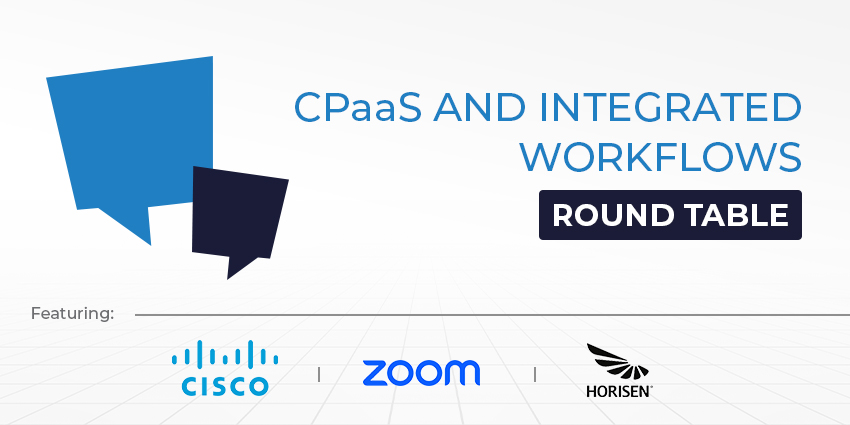The modern workplace has changed. Today’s professionals may not need a specific physical space to unlock the highest productivity levels, but they need the right digital platforms.
Employees congregate daily in virtual tools used for everything from file and screen sharing to project management and collaboration. Unfortunately, while many of these virtual work hubs are brimming with useful functionality, they tend to overlook one crucial thing: business voice.
While a platform such as Microsoft Teams may naturally enable internal interactions between employees, countless team members still need to jump out of the apps they use most often to access calling tools. This creates workflow friction that can reduce productivity, damage efficiency, and even lead to data and knowledge silos.
View Pure IP’s ultimate guide to Microsoft Teams Calling.
For teams to thrive in today’s digitally transforming landscape and deliver the best service to customers, they need a way of embedding voice back into business workflows.
The Value of Bringing Voice into Digital Workflows
The way we communicate has evolved significantly over the years. Today, we can connect through a host of mediums and platforms, from video and SMS to instant messaging. However, voice remains the primary mode of communication for virtually every environment.
Whether serving customers dealing with a complex issue or collaborating with coworkers, voice provides an extra level of clarity that few other channels can provide. Even trending solutions for communication, like video conferencing, would be almost useless without voice.
Embedding voice into business workflows gives businesses an opportunity to create a truly unified environment for end-to-end team productivity. The benefits include:
- Improved agent experiences: As the pressure on teams to deliver unique, personalized, and engaging customer experiences continues to grow, the demand for streamlined digital experiences is increasing. Today’s teams need a unified environment where they can track customer data, manage projects, and interact with colleagues, as well as communicate externally with customers, clients, and partners.
- Enhanced customer experiences: Building voice into business workflows allows teams to be more productive and efficient. When staff members don’t have to spend as much time jumping between tools, they can resolve problems faster. Agents with voice embedded into their workflows can also access the data they need during conversations to deliver more personalized and relevant experiences to customers.
- Increased alignment: Bringing voice into the same digital landscape employees use to stay productive and complete tasks each day creates a more unified technology stack. Businesses benefit from better end-to-end views of processes within the company. Security issues are reduced thanks to fewer apps that need to be monitored and tracked. Plus, the pressure to manage, configure, and provision different solutions is reduced.
How Companies can Embed Voice into Workflows
In the past, bringing voice into collaboration platforms, CRM tools, and other crucial business solutions was a complex process. Businesses often had to approach carriers directly, work with developers to implement new solutions and hire skilled personnel to manage their solutions.
However, the continued importance of voice in the modern business workflow created a demand in the market for a more streamlined, flexible solution. This led to the rise of CPaaS (Communication Platform as a Service) providers and companies capable of providing brands with SDKs and APIs for quickly adding voice to the business ecosystem.
Today, innovative vendors can leverage API technology and CPaaS platforms to bring voice quickly and efficiently into any business process or customer service workflow. This provides both employees and customers with a truly unified, in-application experience from start to finish.
These innovative solutions allow companies to bring their own carrier (BYOC) into workflows that previously lacked voice capabilities. They also enable organizations to build the calling technology they need into critical tools.
For instance, companies using Microsoft Dynamics 365 Customer Service already have access to various solutions for tracking their customer’s journey and interacting with clients. However, many still need an external solution to leverage business-calling capabilities. A connection offering for Microsoft Dynamics means companies can leverage PSTN numbers for the Microsoft environment, capable of scaling globally.
Businesses can choose to embed voice into their existing collaboration platforms, such as Microsoft Teams, or CRM applications such as Salesforce, allowing employees to connect with customers in the same environment where they share knowledge and insights with team members. There’s even the option to bring an existing telephony carrier into a new contact centre application, ensuring businesses can continue to leverage the unique telephony deals, services, and plans of their favourite carrier.
What to Look for in a Solution Provider
CPaaS, API, and voice integration providers give today’s companies the freedom to align their voice needs with the workflows of their existing employees in a way that boosts productivity and reduces costs. More importantly, these tools ensure staff from any environment can deliver exceptional customer experiences without the frictions and roadblocks caused by distributed tools.
As demand for flexible all-in-one toolkits for teams continues to grow, the number of solution providers on the market is expanding too. However, the best options will always offer:
- Speed: Today’s streamlined solutions for embedding voice into workflows can offer everything from pre-configured multi-tenant trunks to back-end managed services to help accelerate the transformation of any technology stack.
- Reliability: Through dedicated SBCs, direct routing capabilities, and intelligent APIs, vendors can provide businesses with exceptional reliability and peace of mind. Some vendors can even offer insights, reports, and analytics to guide business decisions.
- Scale: The best solutions will allow companies to embed voice into workflows for employees all around the globe so that teams can serve customers anywhere. Secure, resilient cloud-based voice networks give teams the freedom to grow.
- Choice: With CPaaS and API solutions, vendors can empower companies to bring their preferred choice of carrier with them into their workflows. Moreover, it’s possible to create connections with various communication platforms, tools, and contact centre systems.
- Security: The best vendors for embedded voice will always keep conversations secure, ensuring businesses can retain high compliance standards when bringing the power of voice into their everyday workflows.
Voice remains a critical part of any company’s day-to-day interactions. By embedding voice into business workflows, organizations can better serve their customers, engage their teams, and achieve operational goals without compromise.







